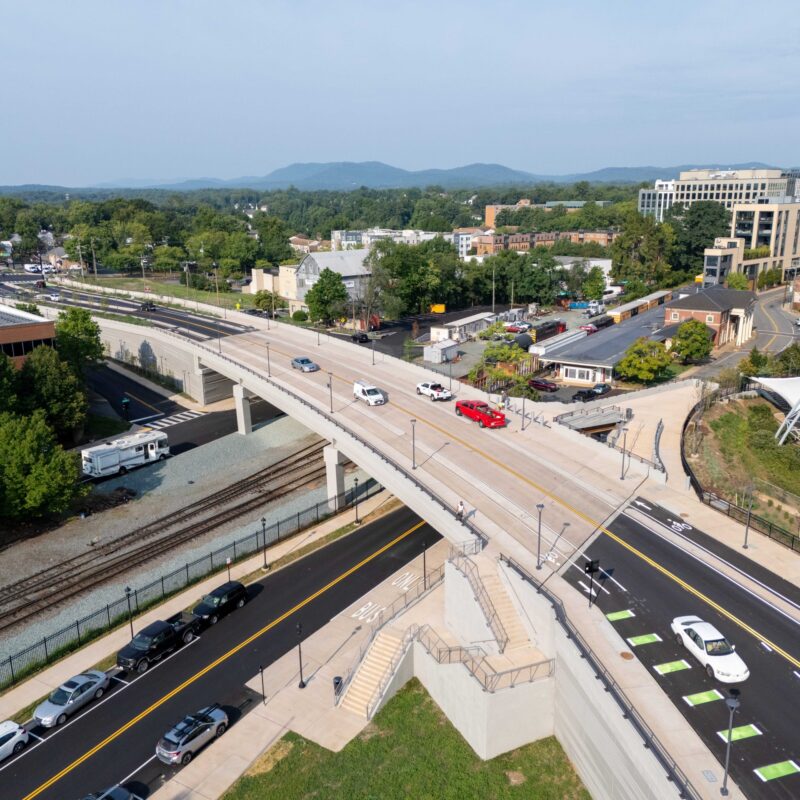Early on a Tuesday morning last month, Sarah Francisco got an e-mail she’d been waiting years to receive.
Francisco, a senior attorney at the Virginia office of the Southern Environmental Law Center in Charlottesville, is the conservation group’s point person on the U.S. Forest Service’s long-delayed management plan for Virginia’s George Washington National Forest. The critical document dictates who can do what to the GW’s 1.1 million acres, but its release had been delayed again and again as officials wrangled with the competing interests of industry and a public increasingly opposed to the possibility of oil and gas drilling in the forest.
And there it was in her inbox: a link to the final plan. Immediately, Francisco was swamped with e-mails and calls from other environmental groups and then from hordes of reporters. The early headlines read like an environmentalist’s nightmare: “Feds allow fracking in national forest.”
But the SELC and other groups that have been fighting natural gas drilling in the forest say there’s much more to the decision than that—and their takeaway is largely positive.
“We’ve always believed that the George Washington National Forest is not appropriate for industrial gas development, and this decision makes the vast majority of the forest unavailable,” she said. “We think that’s a good decision.”
Unlike national parks, national forests have resources that are up for grabs. The feds own the land, but can typically lease out the right to timber or mine it, and periodically, the rules for managing that resource extraction get overhauled. The GW poses a special management challenge, Francisco said, because it’s actually a patchwork. Thanks in large part to how the forest was pieced together in the early 1900s, private entities and not the government own the mineral rights—the resources underground, and the right to get at them —on about 16 percent of its acreage. In some places, the government has offered long-term leases of those mineral rights to industry.
And it’s mineral rights that have received the most attention. As the Forest Service was kicking off discussion of its latest management plan in 2007, natural gas exploration in the eastern U.S. was exploding, as the controversial extraction method known as hydraulic fracturing, or fracking, made it possible to get at the vast reserves of gas trapped deep in shale deposits in New York, Pennsylvania, West Virginia—and a few spots in Virginia, including lands within the GW.
The public discussion about the forest management plan became a pointed battle over horizontal fracking, a method of drilling down and then sideways to increase an extraction footprint. Opponents say it poses a major threat to water supplies thanks to the chemicals forced into wells to help push gas out, and it requires the building of access roads and wastewater ponds. It’s also just about the only way industry could get at the GW’s limited gas. Environmental groups, including the SELC, took aim at the method in the hopes of limiting industry access: Ban horizontal fracking on any future leases, their reasoning went, and you’d effectively ban gas extraction in most of the forest.
That’s exactly what a 2011 draft of the forest plan proposed, said Francisco.
“It made most of the forest available for oil and gas, but it had this restriction on horizontal drilling,” she said. Environmentalists were pleased, and so was the general public. The Forest Service received a record number of comments on the draft plan, overwhelmingly in favor of it.
Gas companies with designs on those future leases, however, weren’t happy, and Forest Service officials went back to the drawing board. They stayed there for four years.
The final management plan was unceremoniously posted on the Forest Service’s website on November 18, and its contents came as a surprise. It didn’t ban fracking on future oil and gas leases; it took those leases off the table completely.
“It accomplishes a similar goal, but in a more straightforward way,” Francisco said.
Not protected from fracking are the approximately 177,000 acres where mineral rights are privately owned or have already been leased—but that was already expected, said Francisco, who added that the conversation was always about the untouched public lands.
“The forest planning process never tried to address those existing gas rights,” she said.
Could the government have blocked fracking completely? That’s a complicated question, Francisco said, because the Forest Service’s legal authority varies from tract to tract within the forest.
Ernie Reed, conservation director for Charlottesville-based group Wild Virginia, said that meant trying to impose a total ban could have created more problems. Lawsuits from industry claiming an overstep would have been inevitable, “and given the courts, you never know what the ruling is going to be,” he said.
The severe limits on further opportunities for fracking constitute a victory for environmental groups, but that doesn’t mean they’re done advocating for the forest, Reed said. The forest acreage most likely to be drilled—the Alleghany Plateau, where there are gas-rich shale deposits—is some of the most pristine, and Wild Virginia will continue to fight for drilling restrictions there.
Reed also pointed out that other resource extractors scored a big win with the plan. It allows an unprecedented level of biomass removal, or timbering for fuel, he said. Burning wood is a notoriously inefficient and polluting way to generate energy, but it can be alluringly cheap. Paper company MeadWestvaco recently built a wood-fueled power plant in Covington, said Reed, and the Forest Service’s decision to allow biomass removal followed. Now, he said, “there’s great potential here for energy companies to look to the National Forest as a source of fuel for burning.”
Francisco said SELC will also keep watching.
“We do have concerns about the potential of gas drilling and fracking anywhere in the GW,” she said, “and if there were a proposal on that, we’d want to look closely at it.”
But those who fought against fracking in the forest should realize that they were heard, she said. “The Forest Service looked at all the existing uses and resources of the GW and listened to the voices of the local community.”





